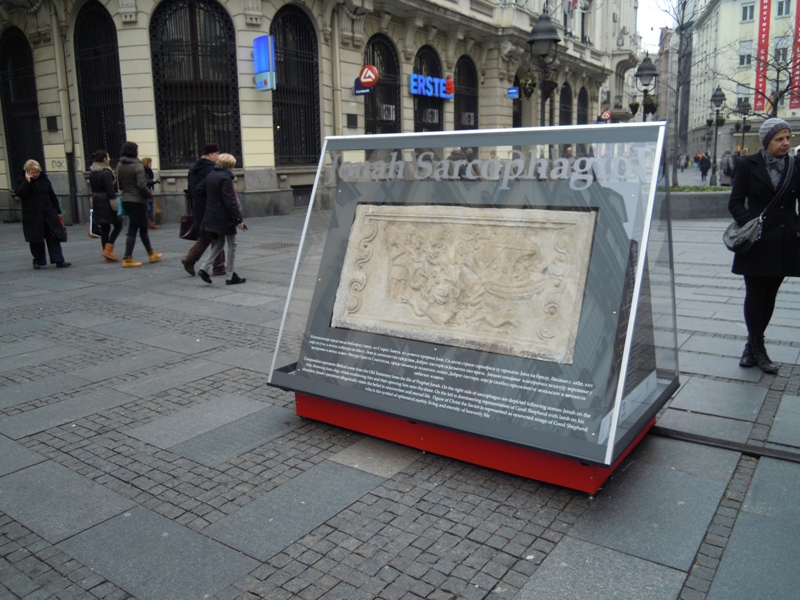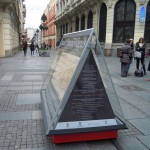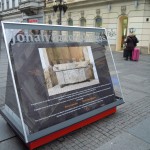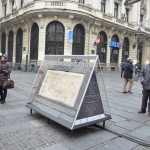Knez Mihailova Street, December 2013 – June 2014
Program commemorating 1700 years of the Edict of Milan “Chirstianity and Belgrade”
Program realization: PE “Belgrade Fortress” and Belgrade City Museum
Project realization funded by Ministry of Culture and Information of the Republic of Serbia
Author of Project: Program Sector of PE “Belgrade Fortress”
Roman stone coffin (sarcophagus) with rare Christian scene was discovered as chance find long time ago, in the year 1885, at the corner of streets Kapetan Mišina and Gospodar Jovanova. On that, Danube side of Belgrade was located northeastern city necropolis of the Roman Singidunum.
Discovered sarcophagus dating from the 4th century is in the collection of the National Museum in Belgrade and is housed in the Big Gunpowder Arsenal at the Belgrade Fortress. On the front side it had main inscription panel surrounded by vertical Noric-Pannonian volutes. Such decorated sarcophagus borders that have volutes along vertical edges appear already from the 2nd century. Subsequently, in the first decades of the 4th century, the mentioned panel had been used for carving the relief composition, which confirms the presence of Christians in Singidunum at the end of 3rd and the beginning of the 4th century.
Sarcophagus was made of porous limestone. It is of rectangular shape and the lid resembling pitched roof is flattened on the top and has acroteria at the corners and one rectangular acroterion in the middle. Dimensions of sarcophagus are 218 x 98 x 74 cm and of the lid 229 x 116 x 28 cm. Dimension of panel with relief is 143 x 73 cm.
Relief scene on the sarcophagus is allegoric representation of salvation of Prophet Jonah from the dead and Jesus Christ as Good Shepherd. Composition carved in low relief was fit into the rectangular space. The scene had been carved crudely with compact, dramatic composition. On the other side of the coffin is a place for inscription, which was not engraved.
Composition represents Biblical scene from the life of Old Testament Prophet Jonah. On the right side of sarcophagus are depicted following scenes: Jonah on the ship, throwing from the ship, whale swallowing him and then spewing him onto the shore. On the left is predominant representation of Good Shepherd with lamb on his shoulders. Jonah’s penitence allegorically states the belief in resurrection and eternal life, while figure of Christ the Savior is represented as renowned image of Good Shepherd who symbolizes ephemerity of earthly living and eternity of heavenly life.
Early persecutions and sufferings of Christians including the Singidunum martyrs Hermylus and Stratonicus confirm accepting of new faith in our city. Singidunum is also mentioned as one of the Episcopal cities in the Acts of the Council held in Serdica in 343, while discovery of sarcophagus with typical Christian scene bear witness to the existence of the organized church in Singidunum in the 4th century.





